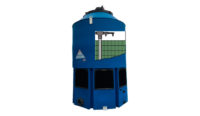Numerous human pathogens have been detected in amoebae, and evidence suggests that amoebae act as incubators in which certain human pathogens multiply profusely. The microbe responsible for Legionnaires' disease is among the bacteria that reproduce in amoebae. Infected amoebae swell like a balloon, burst and release bacteria that then can infect other hosts.
In the new study, Berk's group sampled 40 cooling towers and 40 natural aquatic environments. Infected amoebae were 16 times more likely to be in cooling towers than in rivers, lakes, and ponds.
"Such pathogens of amoebae may spread to the environment via aerosols from the cooling towers," the researchers state in a report published online in advance of a special issue on infectious disease, scheduled to be published in the January 1, 2008, issue of the ACS journal, Environmental Science & Technology.
"Studies of emerging infectious diseases should strongly consider cooling towers as a source of amoeba-associated pathogens."



